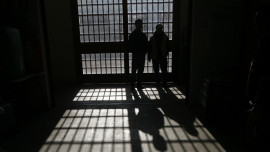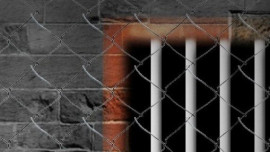
Eight students from the National College of Arts (NCA) have displayed their work inspired by 15th century miniature manuscripts at Brussels Royal Gallery at an exhibition, titled Continuous Conversations.
The artists were given 52 prints to choose from.
“The idea is to start a conversation between the conserved work and modern artists,” art teacher Quddus Mirza says.
Shakila Haider, one of the participating students, says her work is based on socio-political reality. “My work is about the condition of minorities in Balochistan, particularly Shias, the community I belong to.”
Haider’s work is inspired by a miniature painting of Guillebert de Lannoy, a Flemish traveller and diplomat, showing him presenting his work to the Duke of Burgundy.
Haider has focussed on the clergy. She said it showed the power that religion had had over time. “This could also be related to Pakistan,” she says.
Faryal Saleem has chosen to work with the miniature art of Martin Le Franc, a French poet from the late Middle Ages. Her work depicts the wheel of fortune.
Saleem says she has tried to reinterpret the wheel of fortune as a ballot box. “The ballot box is a powerful tool as it decides who comes into power and who doesn’t,” she says. She says that those in power decide people’s fate; hence the ballot box was like the wheel of fortune.
Saleem has also reinterpreted two female figures standing next to the ballot box in the original. A nun is shown wearing a shuttlecock burqa while the royal figure standing next to her is wearing a more modern western dress.
Ali Farhan has used the vintage look of the original work to reinterpret it as children’s literature, including figures and toys.
“I have done a lot of work on children… drawing inspiration from the miniatures,” he said. He has used the work of Leonardo Bruni, an Italian humanist, historian and statesman, that shows a Roman consul fighting a dragon.
In his interpretation, Farhan has made the dragon look like a toy, adding colours to the picture along with a new background to make it look like an illustration for children’s fairy-tale book.
He has also reinterpreted a piece by Honore Bovet, a Provençal Benedictine, the prior of Salon near Embrun, that is about the battle between social classes in the form of a symbolic tree. Farhan has tempered the morbid affect of bodies hanging from the tree by carving the tree and giving it a golden colour.
“The attention goes to the golden tree trunk instead of the bodies hanging from it,” said Sumeira Naeem, a visitor.
The exhibition will continue until June 9.
Published in The Express Tribune, June 7th, 2015.

















COMMENTS
Comments are moderated and generally will be posted if they are on-topic and not abusive.
For more information, please see our Comments FAQ